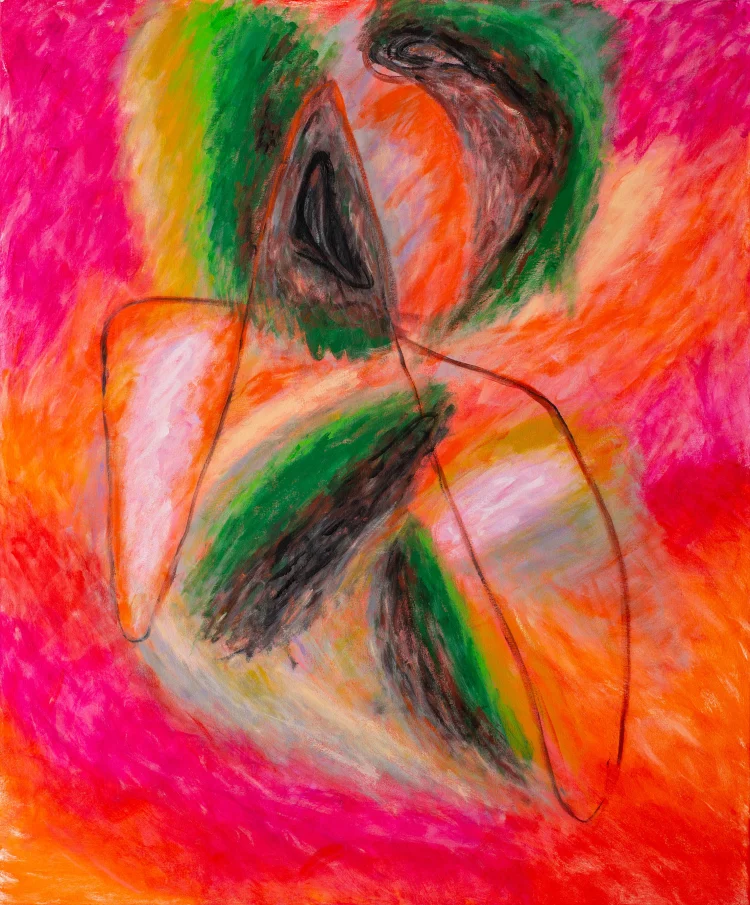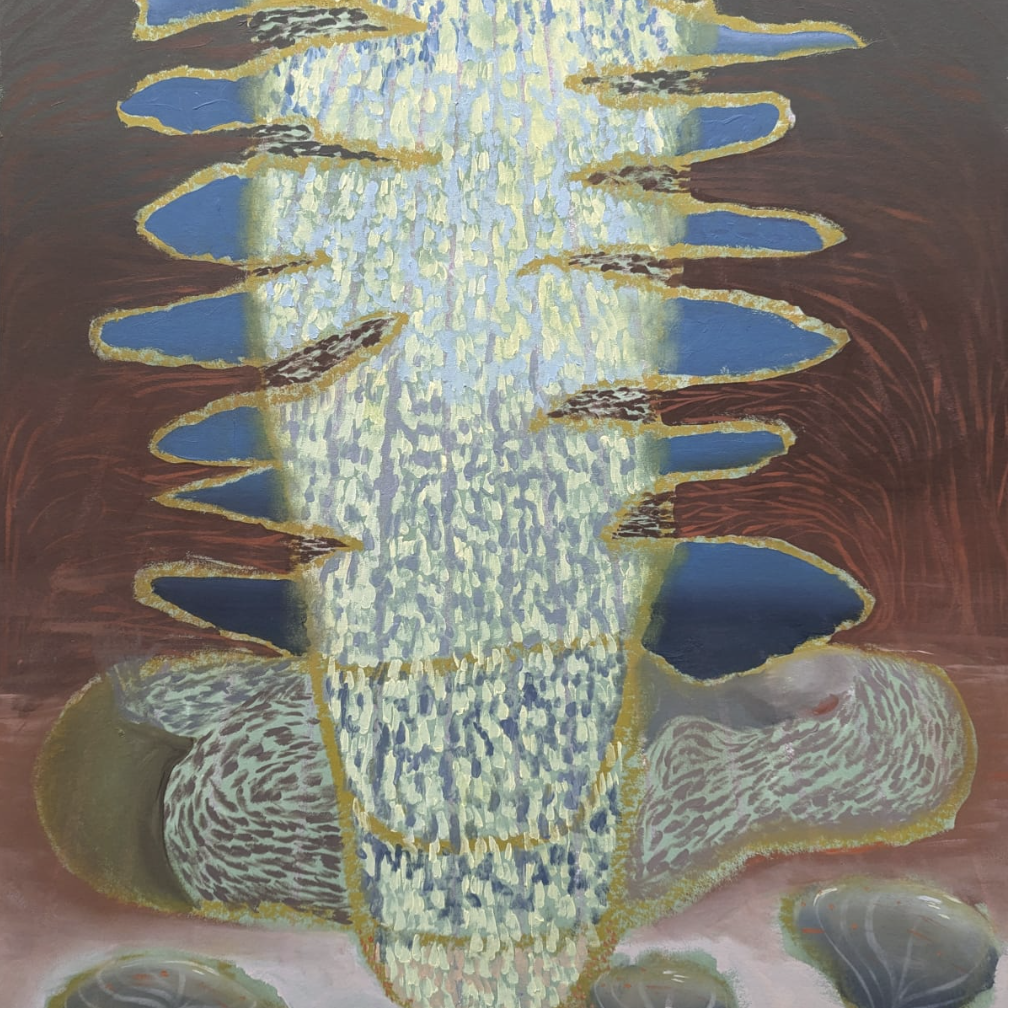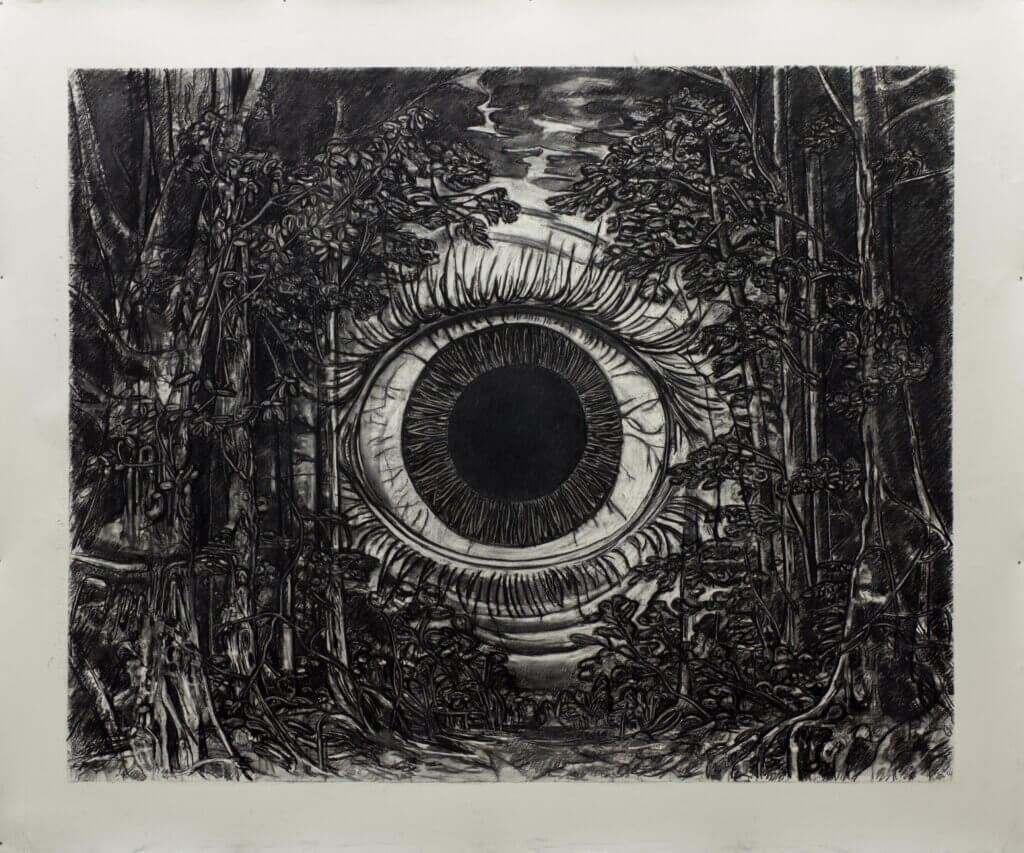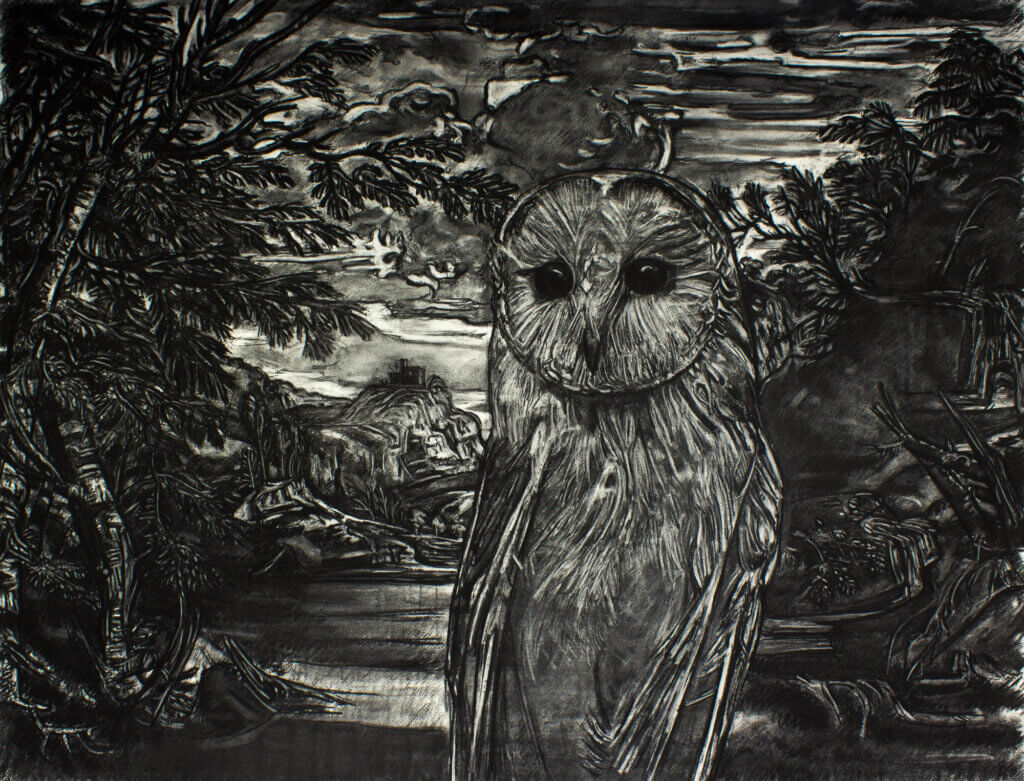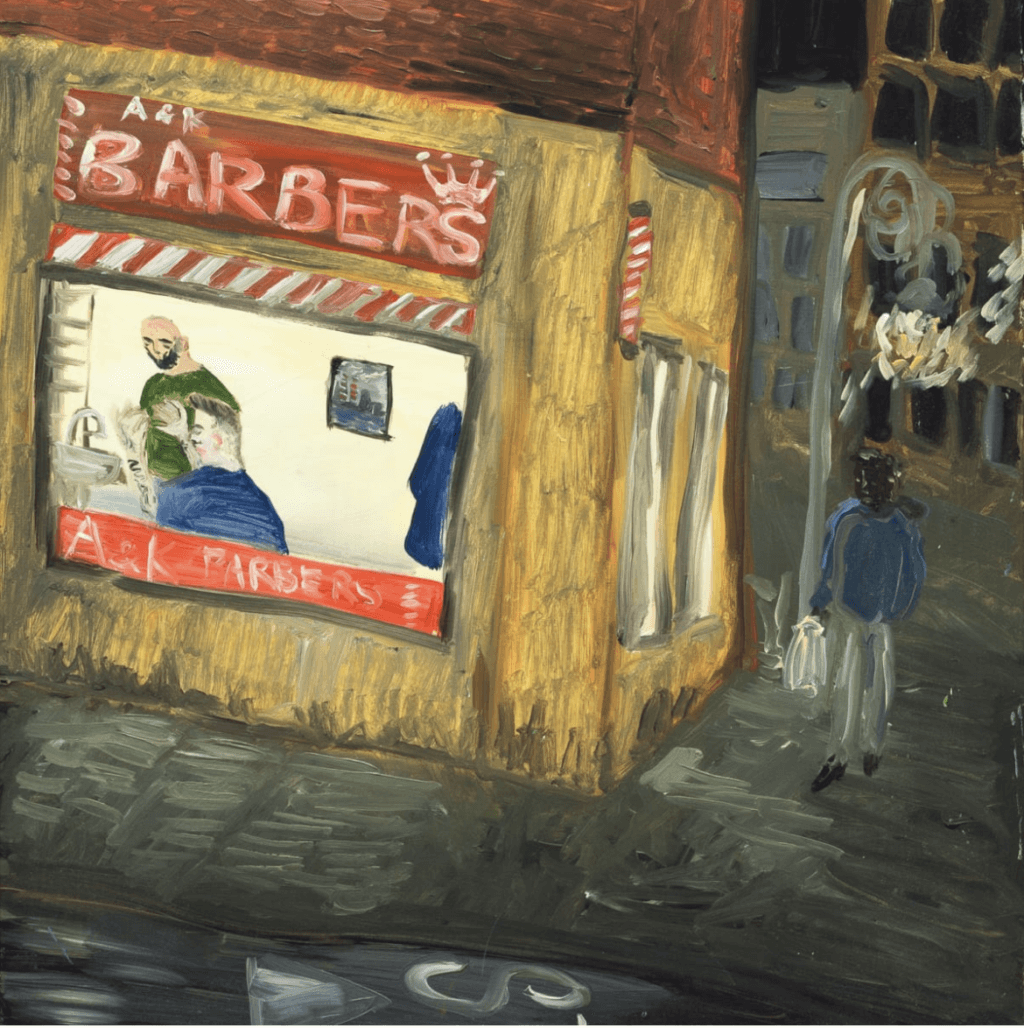
Kevin Kavanagh
8th August 2024 – Exhibition
EXHIBITION: Meantime by Kathy TynanMeantime is a collection of paintings by Kathy Tynan made over the past two years.
FROM
8th August 2024—7th September 2024
LOCATION
Kevin Kavanagh Dublin, Chancery Lane, Dublin 8, Ireland
The title is partly borrowed from the 1983 film of the same name by Tynan’s favourite director, Mike Leigh. It’s also a reflection on a question posed last winter by Tynan’s then three-year-old son, Frank. Waiting for friends to arrive at a holiday cottage in Wexford, while his mother stacked firelogs and patted radiators to see if the heating was coming on, Frank asked: Is it the meantime?
The scenes depicted in this exhibition take place in the meantime. Time passes slowly in these paintings. While far more significant events take place in the wider world, for the artist, a child grows and a terrier ages within a familiar landscape.
Not much was planned for the day, a few errands, a stroll across town, a visit to the playground, one friend helping another move a few things out of her old flat. The trio were to meet in the evening, have a cup of tea and then start packing things into the car. The landlord had done that loophole thing where they say they’ll be selling but then never do, and you see the place listed again immediately at triple the rent. Move the rest of the stuff out of the flat and then come for dinner, it’s spag bol Tuesday.
First though, she was bringing her son and the dog over to Michael Mallin Park where people were gathering to pay their respects to Peter, the kindly vet who had been looking after all the pets of the inner city. It was a credit to the man, as he’d always see that the animal got the treatment they needed no matter what the money situation was. A heart of gold, he had.
Meantime in the Park, waiting for the rain to stop at the inner-tinner.
Red admiral butterfly on one of those purple flowers, what are they called. They’re called buddleia. What is that, a horse chestnut tree? What kind of tree is that?
The butterfly is still up there resting on a leaf, said the little fella. He had climbed the wall and was peering in at the buddleia to get a better view. He looked away momentarily, and when he looked back, he couldn’t find it again, or maybe it had flown away. A blackbird darted from behind the shrubs and he followed its trajectory upwards. Others had gathered in under the trees to shelter. The inner tinner was all wet now anyway, just waiting for the rain to stop.
Meantime walking across town and meeting The Balladeer.
After leaving the playground, they encountered The Balladeer at Cross Guns Bridge, telling a group of people about ‘The Auld Triangle’ which was actually penned by Dick Shannon, he said, though it was often attributed to Brendan Behan because he wrote it into The Quare Fellow. The Balladeer moved into a Behanesque stance with his elbow on the bridge wall as though propping up the bar, Behan had this to say about Dick: ‘This song was written by a person who will never hear it recorded, because he’s not in possession of a gramophone. He’s … he’s … pretty much of a tramp.’
A hungry feeling came o’er me stealing
And the mice were squealing in my prison cell
And the auld triangle went jingle jangle
All along the banks of the Royal Canal
In the ballads collected, sung and passed on, and in the living traditions and culture that we have in this town, we can see that much of what has survived of its past, has done so through the sharing of these songs, said The Balladeer. In an oral culture, where things were not always deemed important enough to be written down and recorded for archives and museums, these songs brought with them a better understanding of what life and creativity might have looked like. Whether relating an incident or a ‘character’, or maybe a more general feeling that is encapsulated in these songs.
Arthur Griffith, that’s who wrote this next one. But it’s about the other canal, he added.
Every night of the year about twelve of the clock,
The spirits and spooks of the dread Thirteenth Lock
Sit swinging their bodies a-this and that way
And singing in chorus ‘Ri tooril li lay.’
Ri Tooril li looril, ri tooril li lay,
Ri Tooril li looril, ri tooril li lay,
Oh! what would you think, sir, and what would you say,
If you met with a ghost singing ‘Tooril li lay?’
‘The Thirteenth Lock’: people think it’s about the Royal Canal but it’s not – it’s about the Grand Canal, hence the mention of the bridge at Athy.
Now some of the places mentioned here in these songs don’t exist at all anymore, the topography of the city has changed, not always for the better. The traditional folk song ‘Spanish Lady’, collected and sung by Frank Harte, in its Dublin iteration the lyrics follow the journey of a lustful and lonesome protagonist, who makes their way through the city past the Gloucester Diamond and the house of Napper Tandy, a popular hero, ineffectual revolutionary and politician of the 18th Century
I’ve wandered north and I have wonder south
Through Stoney Barter and Patrick’s close
Up and around, by the Gloucester Diamond
And back by Napper Tandys’ house
The Balladeer arranged his stance in a manner that showed he particularly enjoyed singing the chorus,
She had a heart so filled with loving
And her love she longed to share
In all my life I never did see
A maid who had so much to spare
Roguishly smiling, he pointed upwards then incrementally downwards as he sang,
She had twenty eighteen sixteen fourteen
Twelve ten eight six four two none
She had nineteen seventeen fifteen thirteen
Eleven nine seven five three and one
That means she had it all; the odds and the evens.
Meantime waiting for a friend to come and help move the stuff out of the house.
The flat was dank and smelled of cigarette smoke, and the atmosphere was absolutely affected by the bookies downstairs, as though the nervous perspiration of punters rose up between the floorboards and marinated the kitchen in sweaty anticipation. Between the races, anxiety, regret, boredom, anger would mingle with sighs of exhaled smoke, which would slip through the front door and curl upstairs to hang below the ceiling.
Every day the kitchen accumulated new stories from Terry Rogers: ‘With twenty-four, six and two won by a length of five seconds, three, four six and two, Fame and Glory, Fiddler’s Bid, Monkey Kingdom, Creepy.’ It was an unending stream of words and numbers spoken in monotone. The doorway was always full of small blue biros, scraps of odds and fag butts.
Outside my window pigeons wheezed into flight and a generator coughed to a hum intermittently throughout the day.
On bright sunny days, particles of dust floated aimlessly, mimicking a cosmos in miniature. In windy weather the carpets rose and fluttered, billowing around the furniture. On good days it was quirky and retro, on bad days it was dreary and stale. There were narrow hallways with red oriental lampshades and the layout was counterintuitive and disorientating, often causing visitors to lose their way. Strange pieces of equipment jutted out over each doorway – parts of an outmoded intercom system that looked like it still had the capacity to bark orders, or that it could still be listening. We loved the kitchen, the acoustics were great for music and there was enough space to start a party. Visitors who had actually lived through the 70s usually shuddered deeply at the décor: brown glass, brown tiles with darker brown motifs, brown lino, brown PVC window frames, brown furniture with brown faux leather upholstering. We even had a brown crystal owl decanter with six brown crystal shot glasses.
Yesterday’s concerns still erupted from the most unlikely places around the flat. Behind the bread bin, between tiles on the wall of the kitchen, there was talk of a dressmaker’s on D’Olier Street that could mend dresses, slacks and skirts. Peeking out from behind the tiles and the Polyfilla another fragment of text spoke of ‘important oil paintings and watercolours, silver plated ware, sculpture, porcelain, mirrors, brass’. Curls of faded brittle paper often peeped out from underneath worn carpets and torn furnishings and for a long time the taps in the bathroom would sputter out scraps of yellowed newsprint:
‘ast nigh news o wreck’
Imagine a family eagerly awaiting news regarding stranded loved ones that may have scrambled onto rocks off the coast, clinging to these watery outposts overnight in the hope that the coast guards would discover them in the early morning. Other snippets were less evocative – words of non-importance and mediocrity,
‘ond stage of middle ts page on discar’
The tragedy of a boat capsised in the middle of the night could share a platform with mundane legal updates as they sputtered out onto my toothbrush simultaneously. When we hired a plumber he told us that there was a stack of old newspapers in the water tank.
It’s a fragmented, ruinous time with so little to go around. The two friends sit in the kitchen after the car has been packed.
The kettle, tea bags, a pack of tea cakes, two mugs, a carton of milk and a capri-sun are the items left in the kitchen. The little fella, the child recounts various occasions where a special dance or song changed the weather, causing rays of sun to burst through and dry out the inner – tinner and the rest of the playground. He’s after crafting a likeness of the terrier out of foil from the tea-cakes.
It’s a calamitous time, isn’t it. Philosophers and embattled social-rights activists look to artists for a redemptive hymn. Evidence of friendship, love, civility, respect, solidarity and compassion in this world. The paintings, they are a touchstone for troubled times.
